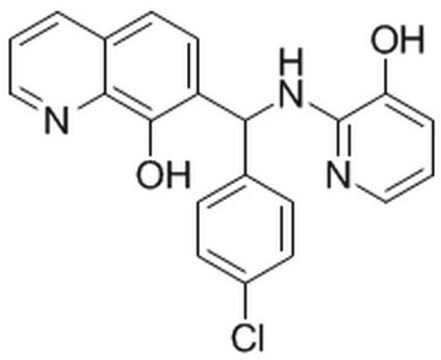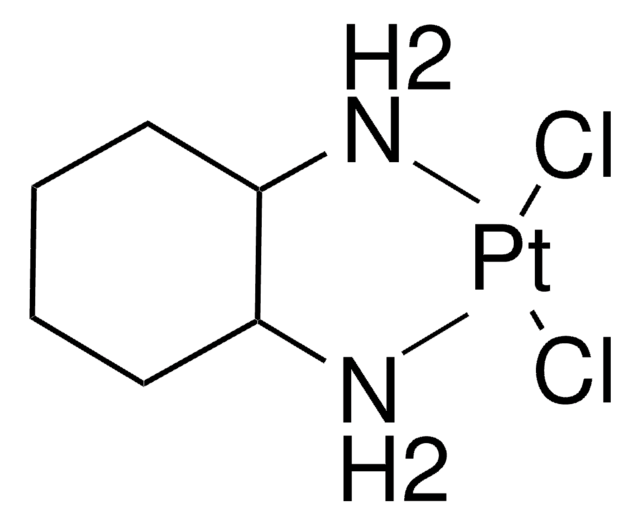SML2175
GSK360A
≥98% (HPLC)
Synonim(y):
GSK 1120360A, GSK1120360A, N-[[1-(2-Cyclopropylethyl)-6-fluoro-1,2-dihydro-4-hydroxy-2-oxo-3-quinolinyl]carbonyl]glycine, N-[[1-(2-Cyclopropylethyl)-6-fluoro-4-hydroxy-2-oxo-1,2-dihydro-3-quinolinyl]carbonyl]glycine
About This Item
Polecane produkty
Próba
≥98% (HPLC)
Postać
powder
kolor
white to beige
rozpuszczalność
DMSO: 2 mg/mL, clear (warmed)
temp. przechowywania
2-8°C
ciąg SMILES
OC(C1=C(N2CCC3CC3)C=CC(F)=C1)=C(C(NCC(O)=O)=O)C2=O
InChI
1S/C17H17FN2O5/c18-10-3-4-12-11(7-10)15(23)14(16(24)19-8-13(21)22)17(25)20(12)6-5-9-1-2-9/h3-4,7,9,23H,1-2,5-6,8H2,(H,19,24)(H,21,22)
Klucz InChI
TYHRZQVUPPODPT-UHFFFAOYSA-N
Działania biochem./fizjol.
Kod klasy składowania
11 - Combustible Solids
Klasa zagrożenia wodnego (WGK)
WGK 3
Temperatura zapłonu (°F)
Not applicable
Temperatura zapłonu (°C)
Not applicable
Certyfikaty analizy (CoA)
Poszukaj Certyfikaty analizy (CoA), wpisując numer partii/serii produktów. Numery serii i partii można znaleźć na etykiecie produktu po słowach „seria” lub „partia”.
Masz już ten produkt?
Dokumenty związane z niedawno zakupionymi produktami zostały zamieszczone w Bibliotece dokumentów.
Nasz zespół naukowców ma doświadczenie we wszystkich obszarach badań, w tym w naukach przyrodniczych, materiałoznawstwie, syntezie chemicznej, chromatografii, analityce i wielu innych dziedzinach.
Skontaktuj się z zespołem ds. pomocy technicznej








